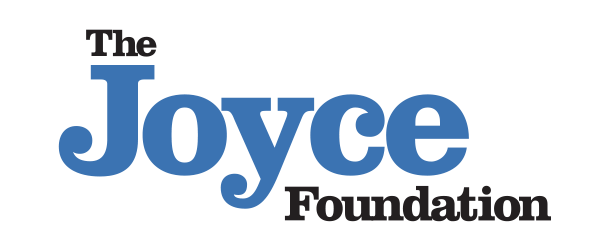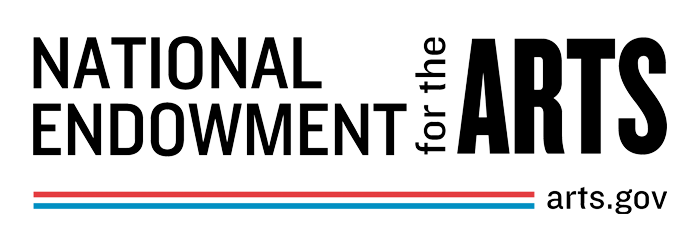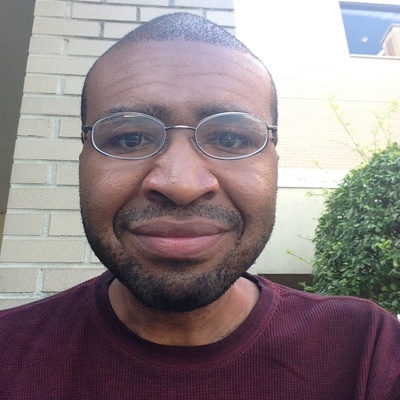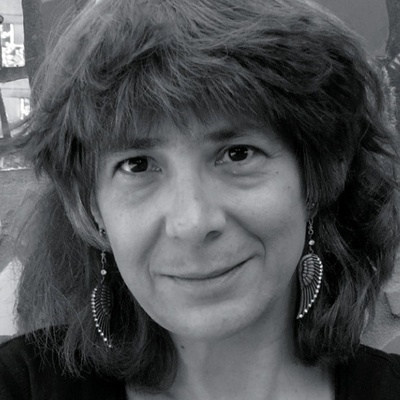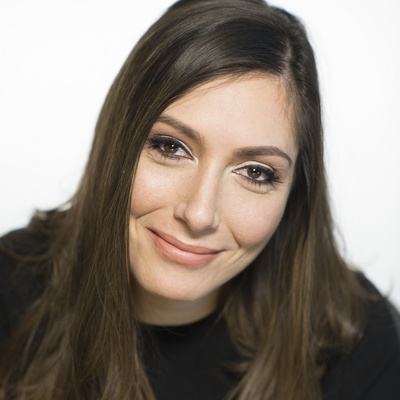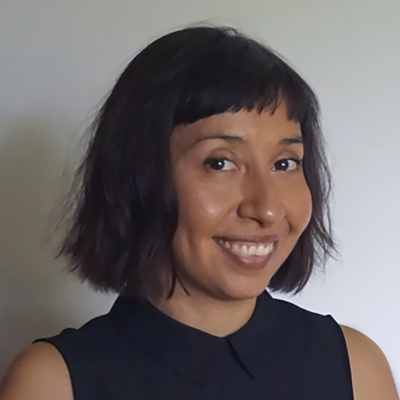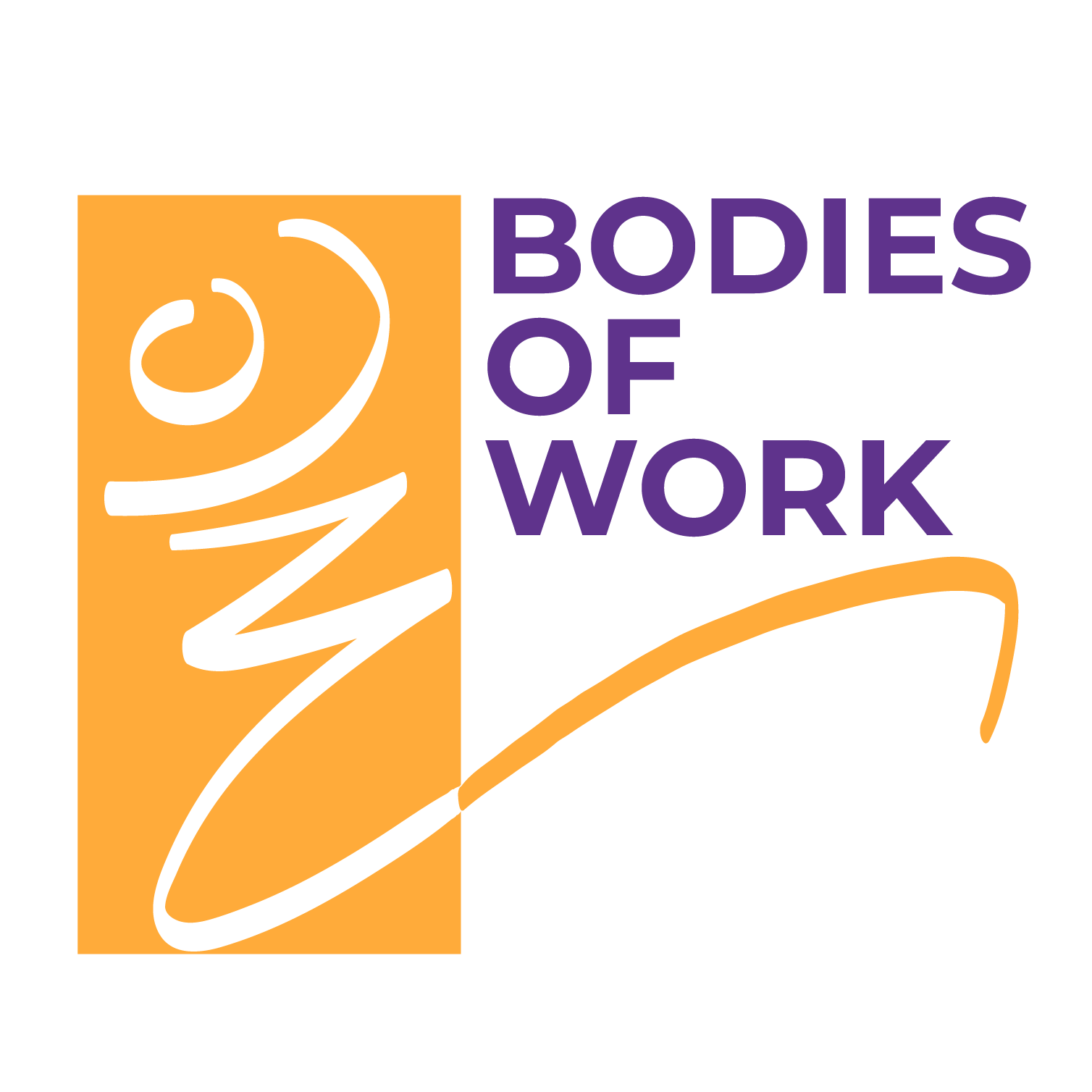Modeling Disability
Summer 2020
Visual artists Riva Lehrer, Mariam Paré, and Reveca Torres talk with filmmaker Justin Cooper about being seen as equal to other working artists and creating art during challenging times.
This is a transcript of the closed captions from the video conversation.
Justin Cooper: This series highlights the voices and work of Chicago artists who have participated in the 3Arts Residency Fellowships at UIC (University of Illinois at Chicago). I was able to chat with Riva Lehrer, Mariam Paré, and Reveca Torres.
Riva is an artist, curator, lecturer, and writer whose work focuses on issues of physical identity and a socially challenged body especially in exploration of cultural depictions of disability.
Mariam uses a combination of digital art, painting, video, and photography to generate a unique story using her own life to reflect the overall challenges and ambitions of the disability community.
Reveca is the founder of the nonprofit Backbones, an organization that connects people living with spinal injuries. She uses painting, illustration, photography, film, movement, and other media as a form of expression and a tool for advocacy and social justice. We discussed the relationship between artist and subject in portraiture and what it takes to build and sustain a culture.
Riva Lehrer: The center for my practice is about two things: giving people a fair amount of control over how they're depicted because, particularly people with disabilities, but other constituencies have been so highly manipulated in how we've been seen over time. In dominant culture that there's a lot of wounding that comes with being looked at, so, one of my goals has been to change that so that being looked at is also about taking control of your own presentation.
Reveca Torres: My background initially was in costume design and theater and then as I started doing some disability advocacy work I started working with other mediums. I feel like I've mashed together my advocacy work and my artwork to sort of connect with the community of artists with disabilities here in Chicago, being able to give my art a purpose for change and for social justice.
Mariam Paré: My paintings largely come from life, I paint the faces of people who inspire me, people who interest me. I paint landscapes from my imagination. More recently I've learned to collaborate with other artists to express our stories and experiences through art and sharing that has been really satisfying.
Riva: I tried to look at the "Tres Fridas" project...
Tres Fridas Project video by Mariam ParéReveca: Mariam and I just finished up a project, an exhibition called "Tres Fridas" project where we recreated images of iconic works of art in history and replaced the subjects for people with people with disabiities.
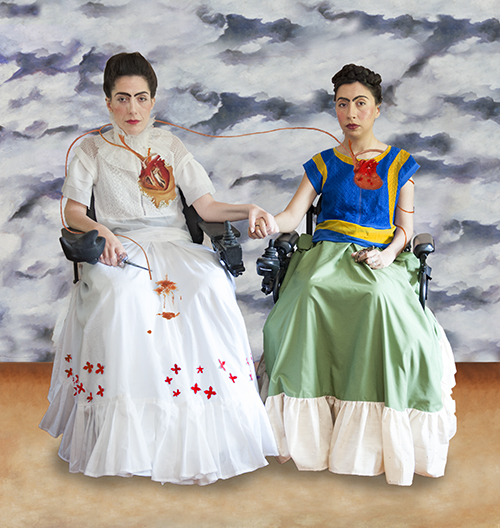 Two Fridas Recreation
Two Fridas RecreationMariam: Either ourselves or other disabled models that we thought would help tell the story of the issue. So, with the Degas "The Dance Lesson", we talked about disability aesthetics and dance and how our bodies move differently than the abled body. So, we injected the Disability Culture into an image that's already familiar to people, to start that dialogue so to introduce Disability Culture to mainstream people in a way that was maybe more palatable than just saying, hey disabled people are different and that should be okay with you. We wanted to say: think of it this way, think of it in a way that maybe you're already familiar with and you could relate it to and this is how we feel about inter-abled relationships and this is how we feel about making music when you're blind or Deaf or, things like that.
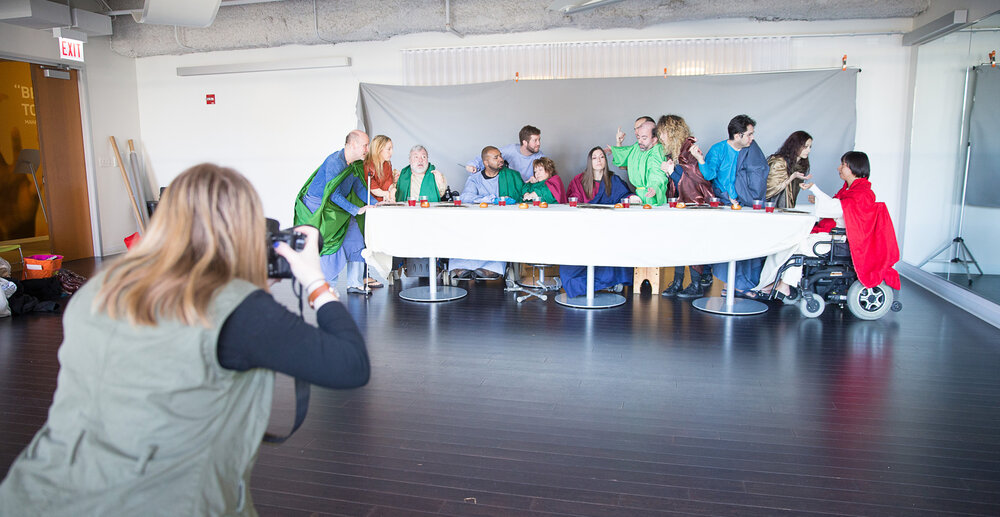 Behind the Scenes of Tres Fridas
Behind the Scenes of Tres FridasReveca: So, together we all came up with what we wanted the message to be for each image. So it's not just an image, like Mariam said, there's a lot of accompanying information and on different issues that our community faces and also just celebrating some of the things within our community. A lot of people mentioned at the exhibition that it was really eye-opening to read the text cards that were with each image which was really nice to hear. Initially we didn't really have plans for it to get as big as, you know we were going to recreate one image and in the end we ended up recreating 16 images and it was super fulfilling to not only find ways of creating this work ourselves, but also meeting some of the people that were models for the images. I think that created an opportunity for us to sort of connect with the community of artists with disabilities here in Chicago.
Riva: It seems like a really powerful and beautiful project. Traditionally the relationship between an artist and a subject has been one of either one side has the power or the other does and I've been wanting to tear that down so that I make myself vulnerable to my subject because well, I generally call them my collaborator, because that's what I'm striving for but to make sure that in the process that we're exploring that they feel, they don't feel like something, a bug being pinned to a wall.
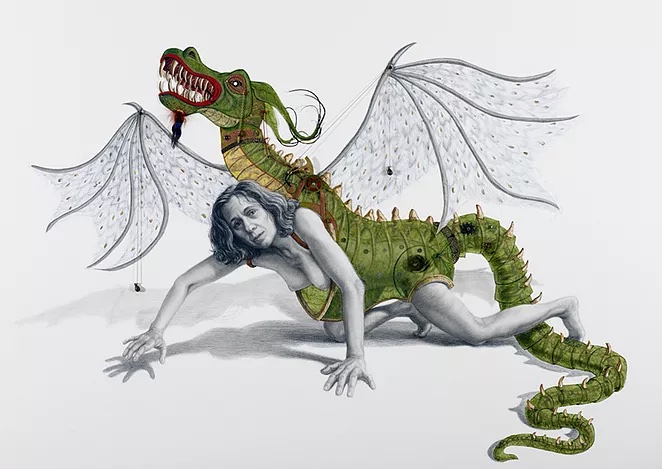 Sheri/Dragon, 2011, Charcoal, mixed media, collage, papers metal and watch parts on board
Sheri/Dragon, 2011, Charcoal, mixed media, collage, papers metal and watch parts on boardMariam: Through my career it has been hard to be taken seriously and not just as a story of tragedy, triumph over tragedy. I found that every time I wanted to tell the story about me as an artist and what I was doing a lot of times it would get flipped to be a story, an inspirational story, you know, the "inspiration porn" kind of story and there was just no way that I could break out of it, no matter how what I said or how I wanted to portray myself, it's that other people would keep making the decision to frame it in this way that has just been so overdone in history so many times the over sentimentalized disabled person. I've learned some of the tools to kind of break away from those difficulties as being seen as equal to other working artists and not just an inspirational story.
Riva: in I think in 1994, it never occurred to me that there could be, I mean, as far as I knew disability arts was part of therapy and was very, demeaned and well-meaning and either not considered to be part of contemporary art discourse or not part of contemporary art discourse.
Riva: I was told that I absolutely should not be working on anything disability related because I would immediately doom any kind of a career that I might possibly have. And that was the message that I was continually surrounded by growing up, that we should be ashamed and we should be hidden. When you can't get there, you not only invent it you make your own work because we were all being rejected, from our respective fields so yeah, you know, now there's been at least two more generations since then and each one is kind of refining and changing the direction.
Mariam: While we're at it, I just want to say to you Riva, how do you define yourself, how do you categorize yourself, or do you categorize yourself, are you an artist with a disability, are you a disabled artist?
Riva: It's all context, I mean if I'm writing a grant, then I'll say I'm an artist and I work on Disability Culture. If I'm at a party and somebody asked me what I do I say I'm an artist and a writer. I feel like standing there as a big old cripple is pretty obvious.
Reveca: It's an interesting question, Mariam, because, I was thinking about how your work is mouth painting and it is unique and it is a part and so like I would want to mention it too. But yeah, I usually just say I'm an artist. I guess I feel the same way, like, you can usually tell that I'm in a wheelchair so people will know. But if it requires for me to put that in a bio or something but usually, it kind of comes out in the other work that I'm doing anyway because a lot of the work that I do is advocacy and it just comes out anyway.
Artist paralyzed by bullet paints intricate designs with a brush in her mouth video by WGN News
Riva: I mean, the most important time to say it is if somebody's looking at my portraiture. I do say that I'm disabled right in there because there are other artists who've done portraiture of people with disabilities, most of them have been outside of disability. Most of them have been in a more voyeuristic position so I feel like it's important to explain that I'm inside the experience.
Justin, what about you, how has the last month, couple months, been for you as a Black man who's disabled who's bridging at least two very profound experiences.
Justin: I'll be honest with you it's been pretty tough you know, I was pretty depressed. Reveca knows this, I'm always out, always traveling somewhere. I'm always doing something, a lot of the work that I've been doing was really focused on mental health, especially within you know Black and Latino communities and we were actually supposed to put out, there was a bill that we were working on that was supposed to be put down state and then when COVID happened that just shut it, that pretty much shut everything down and so all of that work that we were doing, everything just was crashing down and I didn't know how to handle that and then you add the stuff with all the sort of police brutality and then the George Floyd, like, news hit then that just you know opened up a whole floodgate of other issues, you know, as a Black man, as a Black disabled man and everything was just it was just crashing and just falling down on me and I just couldn't deal with everything and to be honest with you just doing these interviews and interviewing all of you, over the past couple of days it's just been it's really upped my spirits a bit. It's really motivated me to continue to do the work that I do and just getting back into it all it's just something that I am glad that I have and for me, it's been something that I'm glad that I have.
Riva: We're here with you.
Mariam: I'm glad I have all you guys too.
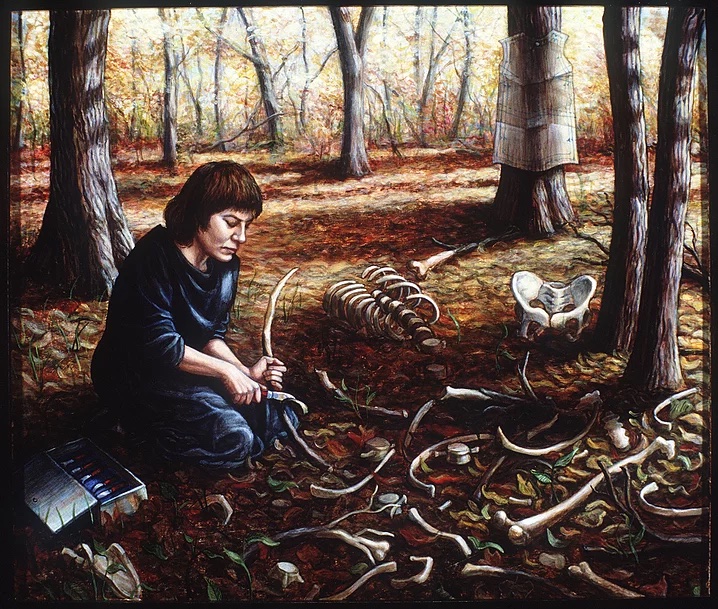 In the Yellow Woods
In the Yellow Woods
Justin: It's been rough, it really has. I'm sorry, it's just been months of stuff so yeah that's kind of where I'm at right now but I'm glad that I'm getting back into stuff and continuing to do the work that I had, that I love to do. I'm glad that you asked that question, Riva, I'm so glad.
Mariam: You know when I think of the Chicago disability arts community I see like a community of people coming together and being a part of that has really made me understand that we all have this really great opportunity to take a really critical role in the heritage of disability arts for the future.
Riva: I think that our number one task in a way is to let the world know that there's a culture. Once the institutions know that there's a coherent culture and that you're working within it and you're commenting on it and you're furthering it, that changes it from just a couple of artists who seem to be doing this project to a really profound social context. And I think that's what's really changed things for us.
Reveca: I've met artists that are doing you know visual art from dancers, voice over artists, actors. I just think it's great to see and it really brings me to feel like I can do whatever the hell I want with my art because this is what I have to say and this is how I want to do it and feel supported that there's other people doing it their way as well. It makes me really excited to have a community.
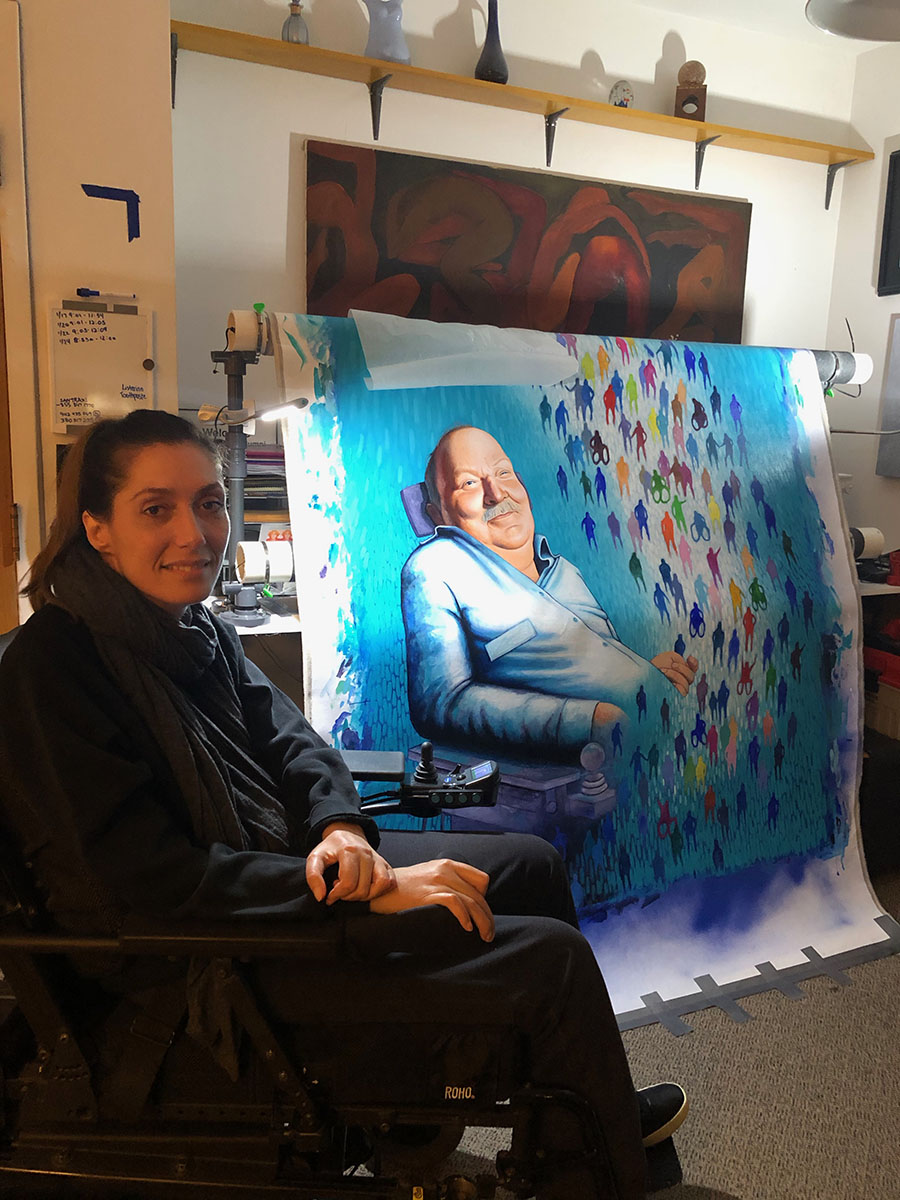 Mariam with painting
Mariam with painting
Mariam: My experience with the fellowship and the residency I felt like I was an island before an island of an artist kind of new to a lot of these concepts of being around the Bodies of Work people and the people at the fellowship, and UIC. Even though I inherently knew disability aesthetics because I happen to be a mouth painter and everything I do informs, you know, my disability informs my art so much but it wasn't until I came into this community through the fellowship that words and definitions were put to it and made me understand a new way of understanding what I was kind of already doing and what others were already doing and that I wasn't alone and there's so many other artists striving to be heard and to have a voice just like myself. That's really exciting. It's like the shared act of our community is saying you know we make the world and we just don't want to inherit it we want to include our voices, include our stories, our aesthetics, our artistic sensibilities and that's really powerful. I know it's going on in other places but the fact that I'm here in Chicago and experiencing it with this really large community and with the programs that we have here and 3Arts I believe that there is a powerful community here.
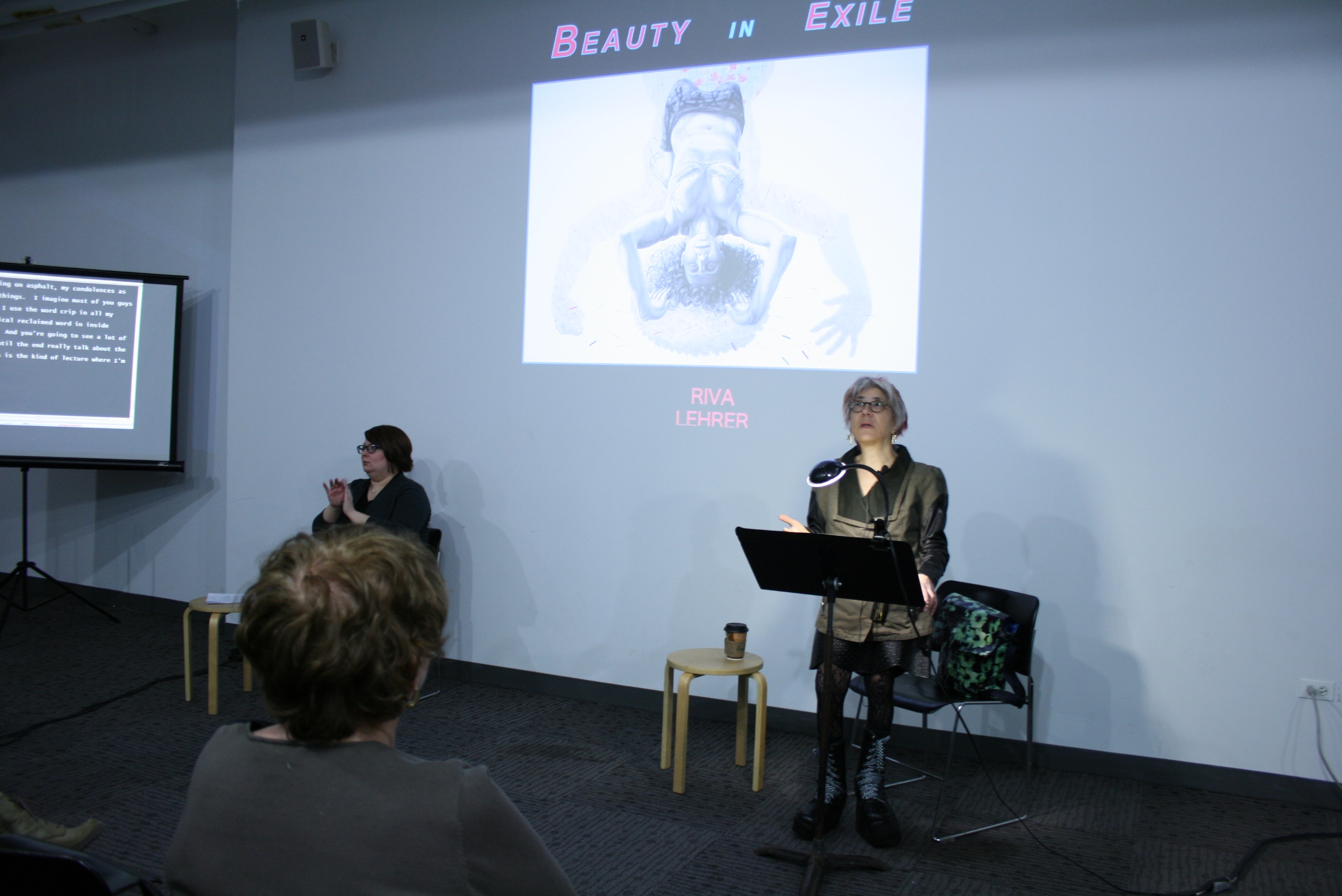 Beauty in Exile Presentation
Beauty in Exile Presentation
Riva: I want us to have what we need but I want us always to be able to be, a little bit startling, a little bit on the margins so that we can stay aware of the power that we do have in being different and always having to remind people that humanity comes in such a range of morphologies and behaviors and you know the envelope of humanity is made out of elastic and people want to make it out of concrete and I want us to be able to keep it elastic.
Justin: I'm so glad that we did this session last because it just feels like everything kind of just came full circle, everything sort of just came together, so you had the history aspect you had trying to be, you know, recognized for the work that you do and then you know going into disability aesthetics and it just all came into this one last session. I'm really glad that I was a part of that. And I'm also thankful to Riva for asking me the question about how I was feeling and you know for me that was something that I think was really deep and really poignant for me and so I am grateful for her and I am grateful for all these artists that we interviewed I'm just really proud of the work that they do and I'm very proud of what 3Arts, Bodies of Work, and UIC (University of Illinois at Chicago) have done in coming together and putting this initiative together because it's important, as disabled artists especially here in Chicago to really keep it going, making sure that this community is sustained and that it keeps going for generations to come so I am very thankful for everyone that was involved in these sessions.
The Disability Culture Leadership Initiative and 3Arts/Bodies of Work Residency Program are supported in part by grants from
the Joyce Foundation and the National Endowment for the Arts.
